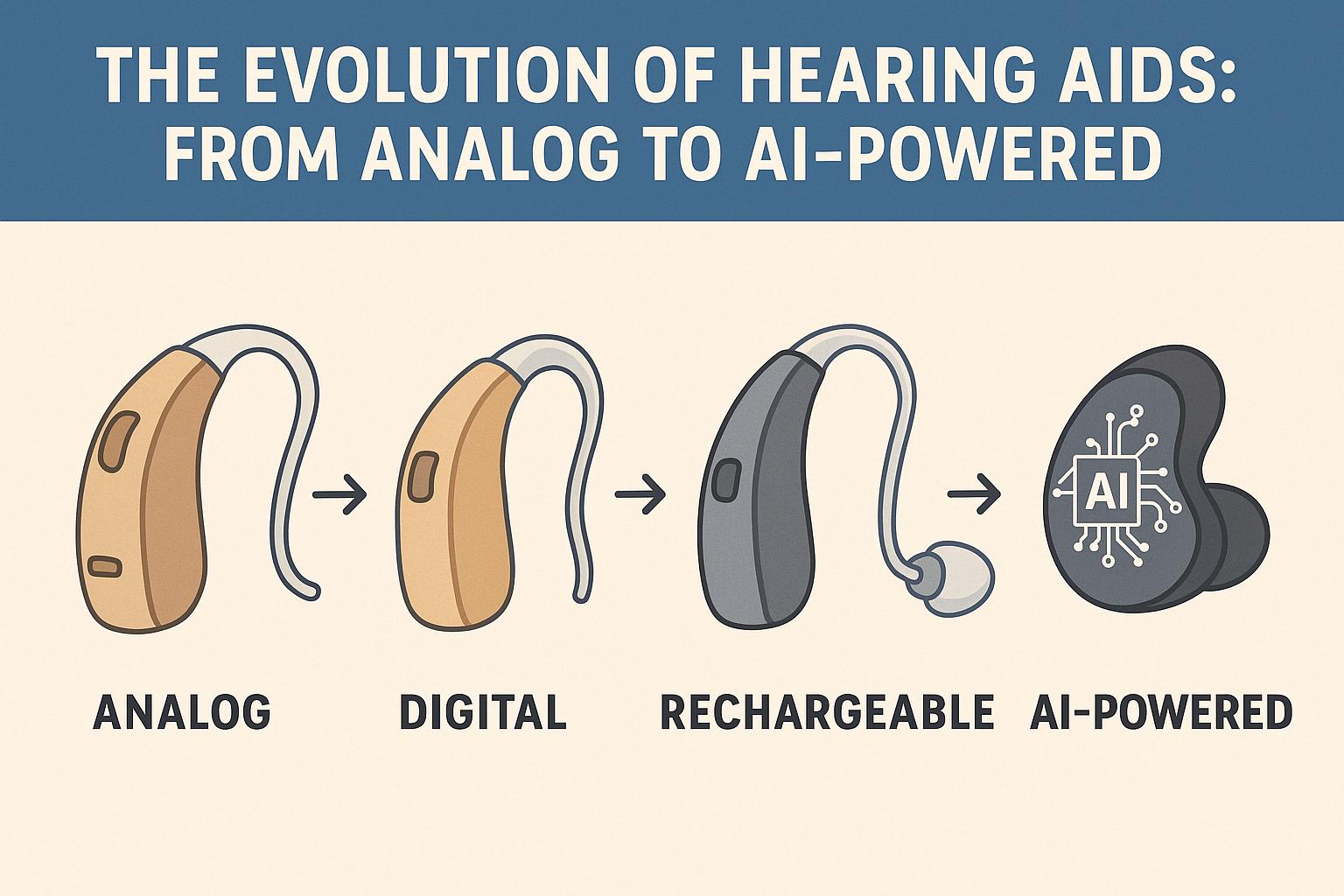The Early Days of Hearing Aids
Hearing aids have undergone remarkable transformations since their humble beginnings in the late 19th century. Initially, these devices were referred to as “ear trumpets.” They relied on an acoustic funneling principle that aimed to amplify sound, allowing individuals with hearing challenges to experience a modest improvement in their auditory perception. The construction materials varied and often included metals like brass or common materials like wood. The design of ear trumpets lacked subtlety, and their performance was suboptimal compared to today’s standards; however, these primitive instruments laid the groundwork for contemporary assistive hearing solutions.
In their simplest form, ear trumpets functioned by collecting ambient sound and directing it into the ear canal. Their effectiveness was largely contingent on the user’s skill in positioning the device. Though not reassuringly discreet or efficient, the ear trumpet marked a pioneering approach to hearing difficulties. This phase in hearing aid development demonstrated the perennial human quest to overcome sensory limitations, setting the stage for future technological breakthroughs.
The Introduction of Electric Hearing Aids
The shift from mechanical to electric devices marked a significant turning point in the history of hearing aids. As the 20th century dawned, technological innovations led to the creation of the first electric hearing aids. These early iterations featured carbon microphones and vacuum tubes as their core components. Carbon microphones captured incoming sounds, while vacuum tubes amplified these auditory inputs to higher levels. Compared to their acoustic predecessors, these electric models offered improved sound amplification capabilities.
Despite the enhancement, they came with their own set of challenges. Electric hearing aids during this era were notably bulky and required substantial amounts of battery power, making them less convenient for everyday use. Despite these drawbacks, their introduction was a milestone that established foundational concepts for subsequent designs. The move toward harnessing electricity for sound amplification demonstrated a shift in solving hearing impairment through innovative yet practical applications of technology.
Transistor Technology
The middle of the 20th century heralded another major advancement in hearing aid technology with the advent of transistor technology. The integration of transistors in hearing aids during the 1950s represented a departure from the use of vacuum tubes. Transistors were significantly smaller, consumed less power, and generated less heat than their predecessors, allowing for the creation of more compact and portable devices.
This transition facilitated broader accessibility, as hearing aids became less cumbersome and more user-friendly. The shift not only allowed more people to utilize hearing aids but also marked a period of increased consumer acceptance. As devices became more practical for daily use, they established themselves as essential tools for those with hearing impairments. The era of transistor-based hearing aids celebrated technological pragmatism by bringing efficient yet effective auditory assistance into mainstream use.
The Digital Revolution
Another landmark development came in the late 1980s with the introduction of digital technology in hearing aids. This period mirrored advances in digital computing and microelectronics, allowing hearing aids to transform sounds into numerical codes for processing. Unlike analog models, these digital devices used complex algorithms to filter, process, and amplify sounds with remarkable accuracy.
The adoption of digital hearing aids revolutionized user experience in several ways. First, the sound quality improved significantly, offering clearer and more precise auditory assistance. Second, the digital format allowed for customizable settings, tailoring the amplification to the unique hearing profile of each user. This individualized approach enabled users to adjust their devices according to different listening environments, a feature not possible with earlier technologies. The digital evolution exemplified the growing intersection between computational technology and medical devices, paving the way for even more tailored auditory solutions.
AI-Powered Hearing Aids: The Future of Hearing Technology
Today, one of the most intriguing advancements in hearing aid technology involves the incorporation of artificial intelligence (AI). AI-powered hearing aids possess the capability to learn and adapt through machine learning algorithms, revolutionizing contemporary hearing assistance. They analyze auditory environments instantaneously, optimizing user experiences by adjusting settings autonomously.
AI technologies enable these devices to distinguish between varied sound sources, significantly improving the user’s capacity to focus on conversations in noisy environments. Furthermore, many of these advanced hearing aids can seamlessly connect to other smart devices, integrating into the broader ecosystem of digital technology that dominates modern living. By minimizing background noise while highlighting important sounds, AI-powered hearing aids offer a dynamic and proactive solution in auditory assistance. The potential of AI to further enrich the lives of individuals with hearing impairments heralds a promising future in which technological integration marks the pinnacle of personalized healthcare.
The journey from acoustic mechanical devices to AI-driven smart hearing aids underscores an era of continuous innovation. Each phase of development exemplifies the human spirit of ingenuity and the relentless pursuit to improve quality of life through technological advancement. As research and development forge ahead in the realm of auditory assistance, there seems to be no limit to what future hearing aid technologies might achieve, ultimately enabling individuals to engage in the world more fully and richly.
